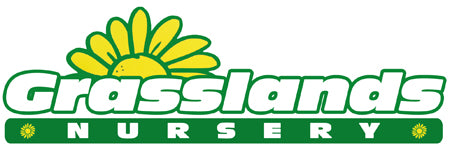Free Delivery £400+*
Hedging, Tree, Shrubs & more
Free Delivery £400+*
Berberis Hedging 'Red Chief' – Vibrant, Hardy & Versatile Shrub for Year-Round Interest Berberis Red Chief is a striking, evergreen shrub celeb...
View full detailsIf you need a practical, wildlife-friendly, and attractive boundary plant, our Berberis Hedges are an excellent choice. These hardy, prickly hedges enhance any garden and provide winter fuel for wildlife.
Available in evergreen or deciduous varieties, Berberis features colourful spiny foliage that changes from autumn through winter. In spring, they produce small clusters of yellow, orange or pink flowers and berries that attract birds (not suitable for humans or dogs). Offering shelter for nesting birds, Berberis is easy to grow in well-drained soil and responds well to trimming.
Our website offers an impressive selection of great value Berberis hedging plants, each with unique characteristics. All our plants are professionally grown and nurtured at our 30-acre site in Cheshire, ensuring the highest quality.
Ensure regular and thorough watering, especially in summer and for the first year while the roots are established. This will keep the soil moist but allow it to dry out between waterings to prevent root rot. Reduce watering in winter when the plant is dormant.
Prune in late winter or early spring to remove dead or damaged branches and to maintain shape. Avoid heavy pruning, which can affect flowering and fruiting.
Feed in early spring with a balanced, slow-release fertiliser. Avoid over-fertilising, as it can lead to excessive leafy growth at the expense of flowers and berries.
Thrives in well-drained soil and prefers full sun to partial shade. Mulching helps retain soil moisture and regulate temperature.
Avoid waterlogged or poorly drained soils, as well as excessive shade, which can cause leggy growth. Be cautious with heavy pruning, as it can reduce blooming and fruiting.
Berberis sawflies are larvae of small, wasp-like insects that feed on Berberis leaves, causing irregular holes or notches in the foliage and potentially leading to significant defoliation. Signs of infestation include green or yellow larvae on the undersides of leaves and visible leaf damage. To treat them, handpick larvae from the plant or apply insecticidal soap or neem oil to affected areas. For severe infestations, consider using a chemical insecticide as directed but be careful if you have pets and wildlife living in your garden as this can cause harm to them. Encouraging natural predators like birds and beneficial insects can help manage the population, and regular monitoring will help catch infestations early.
Aphids are small, soft-bodied insects that cluster on the undersides of leaves and stems. They feed by sucking plant sap, which can cause distorted growth and curling of leaves. They also excrete a sticky substance called honeydew that attracts sooty mold.
Rust appears as orange or rust-colored pustules on the undersides of leaves. It can cause leaf drop and weaken the plant. Remove and dispose of affected leaves and apply a fungicide if necessary.
Leaf spots cause dark, sunken spots with yellow halos on leaves. It can result in premature leaf drops. Remove and destroy affected leaves and apply a suitable fungicide to prevent further spread.
Our plants are expertly grown and cared for, before being sold at excellent prices to retailers and the public.
We are a trusted and respected nursery, with a reputation for producing top-quality plants.
Our team of horticulturists care for our products to ensure happy, healthy plants which are ready for sale.
We want our plants to live a long, healthy life so we’ll advise you about planting on purchase and share tips on our blog.
We supply to Garden Centres, Landscapers, Garden Designers offering exclusive discounts.
CREATE A TRADE ACCOUNT
£400.00 away from free* delivery!
